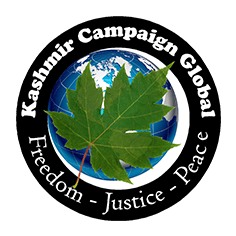The Indian census data for 2001 shows that 67% of the population of Kashmir and its associated territories are Muslim. Kashmir also has minorities, specifically Hindus, Sikhs, Christians, Buddhists and Jains. The table below provides a snapshot of Kashmir’s demographic profile.
Table: Demographic division of Kashmir and its territories
| Muslims | Hindus | Sikhs | Others | Totals | |
| Indian Occupied Kashmir (IoJK). | 6,793,235.89 | 3,005,578.31 | 205,917.11 | 137,954.32 | 10,143,700 |
| Azad Kashmir (AJK) | 4,361,000 | Zero | Zero | Zero | 4,361,000 |
| Total | 11,154,236 | 3,005,578.31 | 205,917.11 | 137,954.32 | 14,504,700 |
Sourceses: IoJK https://jk.gov.in/jammukashmir/?q=demographics and AJK https://www.ajk.gov.pk/ajk-at-a-glance
As can be seen from the above table, the majority of Kashmiris, living in two valleys are Muslims and are 76% of the total demographic of Kashmir’s sovereign territory.
The demographic profile of Kashmiris and its predominantly Muslim leitmotif has a significant influence on the nature of the political economy. Kashmiri minorities are well settled in the area. According to Indian census data, an estimated 50-100,000 Muslims and 150-300,000 Hindus migrated out of Kashmir.
The events of 1947-2019 bear heavily on Kashmir and have resulted in the extreme radicalisation of Hindus and Buddhists of Kashmir. Today there is a culture of hostility and hatred between communities. The 1987 election and its aftermath impaired the free and fair exchange of ideas between communities in Kashmir. As it became clear that Kashmiris want self-determination, the Hindus were migrated to India and predominantly Hindu parts of Kashmir. The events and rigging of elections cleaved and shattered the covenant of decency between Kashmiris and the local Hindus. The façade of democracy imposed by India through article 370 unravelled and exposed the strategic reality of Kashmir dispute in terms of its military aspects between India and Pakistan. The troubles led to the killing of 214 Kashmir’s Hindus and claims of rape of their women by local youth.
Kashmiri Muslims have responded to this tragedy using non-violent means. There have been few groups that attempted to take control, but due to local cultural, social and economic factors, these groups have not been able to create a strong foothold. The political response of Kashmiris can be summed up in the following points
- Civil disobedience action: Kashmiris under the leadership of APHC, frequently resort to carrying out civil disobedience actions. The most common tactic is self-imposing curfew and stopping going to schools, offices, banks and shops. The civilian society shuts down, and this response is given to massacres, custodial killing, rape and sexual exploitation
- Marches and protests: This tactic is common and local political leaders issue a call to march towards the UN offices demanding implementation of UN resolution to carry out self-determination.
- Celebration of martyrs: Events are held to remember and celebrate the lives of people who have been martyred as a result of massacres and custodial killings.
- Boycott of elections: The APHC issues call to boycott all elections that are held and these boycotts have proven to be very profoundly effective. They have exposed the fact that elections are not real as India always rigs them and the practical solution is self-determination.
- Violence: Youth in parts of Kashmir also resort to stone-pelting of police and Indian paramilitary vehicles. This type of response is restricted to dense urban areas, and Indian police respond by spraying chemically enhanced pellet guns that blinds and maims limbs.
- Militancy: Groups with small arms emerged in the early 1990s and have continued their activities. These groups, known as the Mujahedeen (e.g. holy warriors) tried to defend people and property from the attacks of occupying forces as well seldomly carrying out attacks to protect themselves. These groups have not been successful. None the less they were present, and their number is not known.
- Kashmir Hindus: Many of Kashmiri were moved out of Kashmir by the Indian government in the early 90’s and provided with “Golden Package” to resettle them in India. They have continued their life and are increasingly joining extremist Hindu groups in India.
Read Indian mechanisms to attenuate the struggle of Kashmiris

